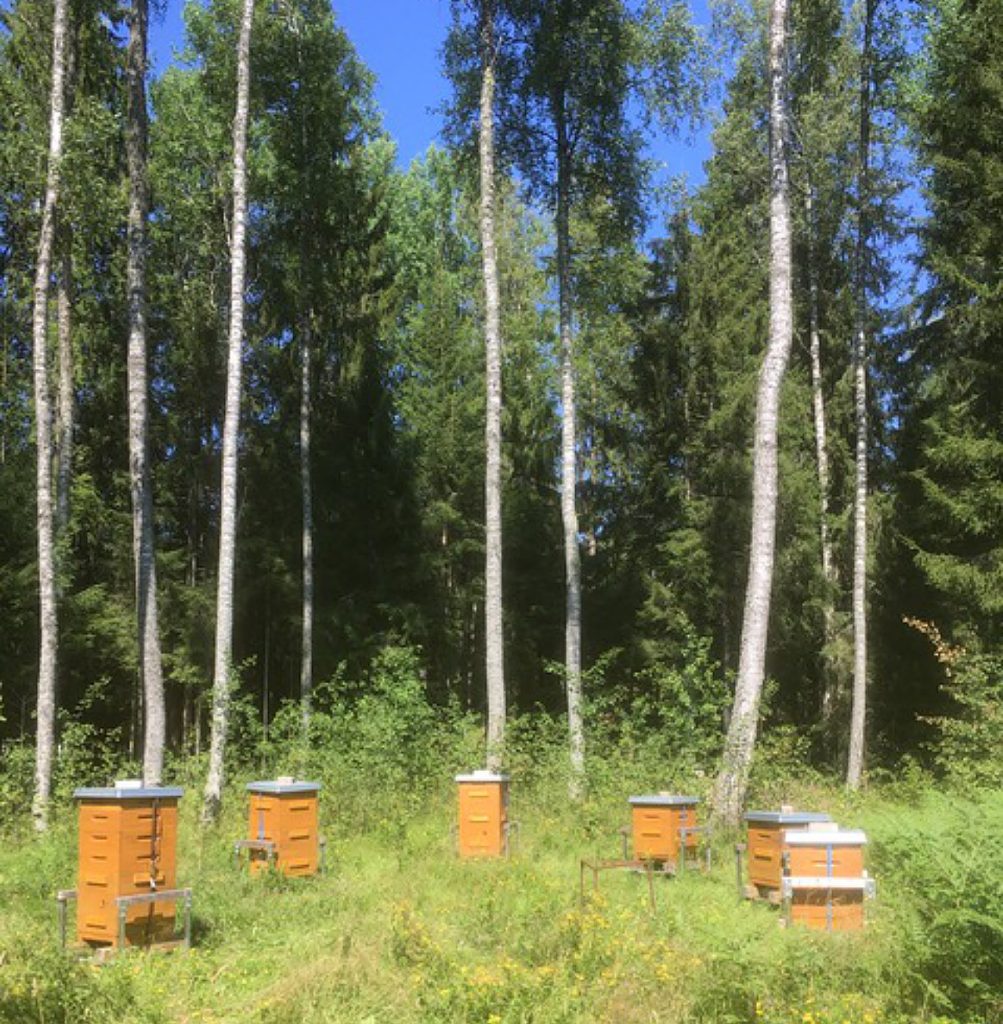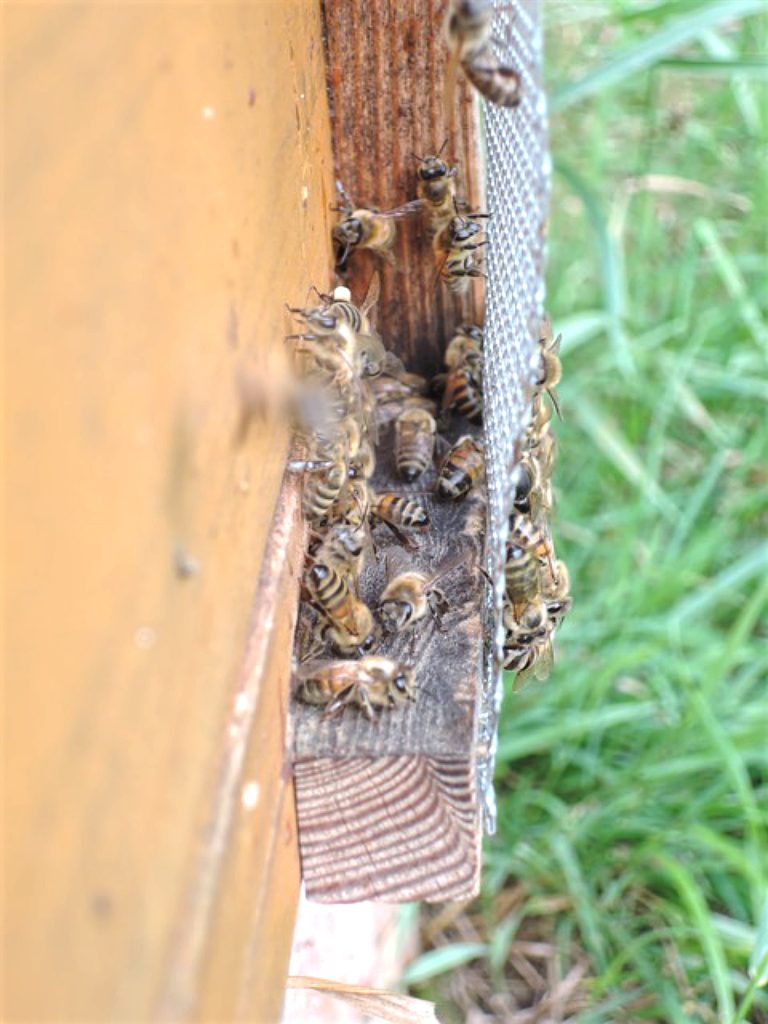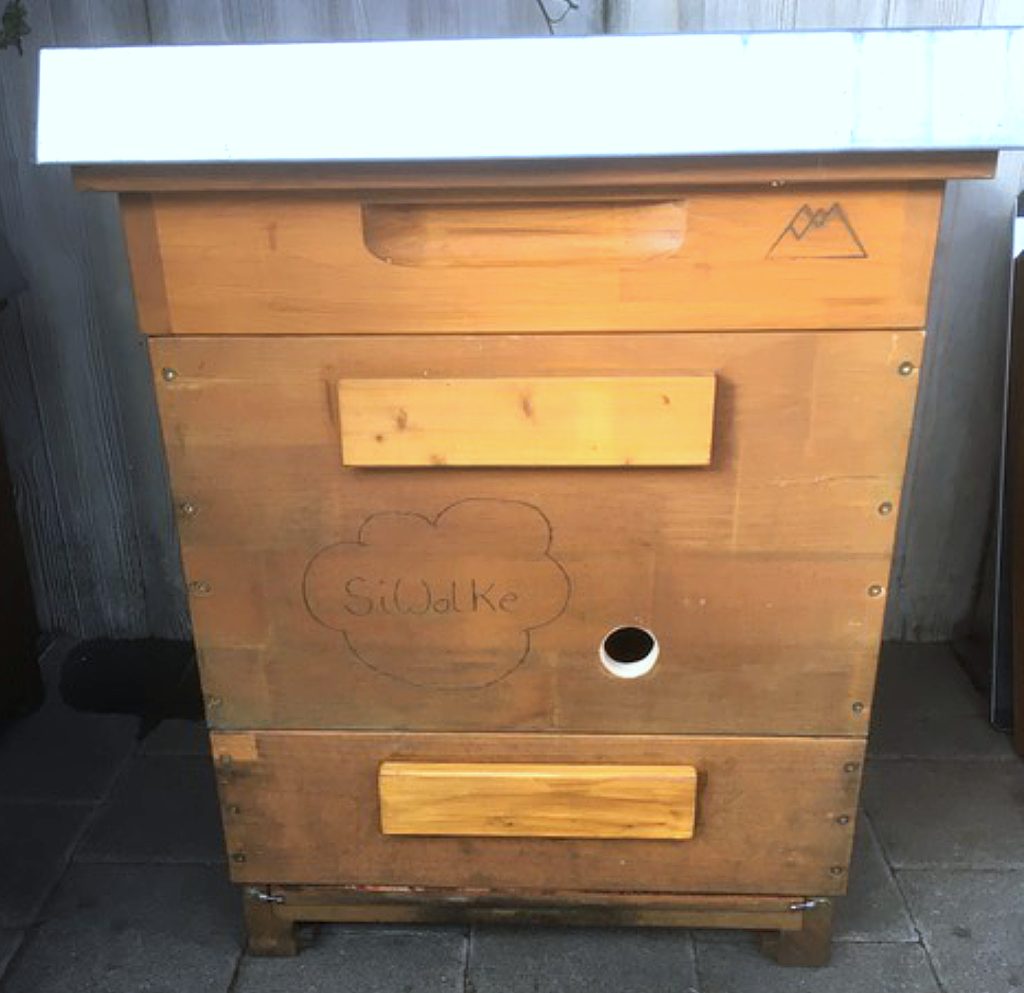Selection and no chemicals but a too close to treatment bees
In 2019, Sibylle and Wolfgang bought 3 Elgon colonies from me. They were all treated for varroa with half a dose of thymol that year. Since then, they have never been treated for varroa.
In 2020, two splits were made. The queens made by the splits were mated in Hallsberg’s Elgon area. When their bees were wintered in 2021, three colonies had supersedured their queens themselves. The new queens were of course mated in their apiary.

They have their apiary about 20 km from the Elgon breeding area in Hallsberg with 350 Elgon colonies and no other bees. Just over 1 km from them is another small Elgon apiary. Just over 2 km in one direction there is an apiary with just over 5 colonies with other types of bees. Just over 1 km in another direction is an apiary with just over 10 colonies, also with other types of bees.
They have not had any winter losses, despite the lack of treatment and the apparently too short distance to other types of bees. We can try to explain this:
– Somehow the explanation lies at least in part in the fact that miticides (organic or other) do not affect the treatment-free communities negatively while they affect the other types of bees negatively enough so that they affect treatment free bees less than they otherwise would have done, perhaps they produce less vital drones. No chemicals.
– Another explanation is that since a queen mates with about 20 drones on average, it is enough that enough many treatment-free drones mate with the new queens for their colonies to continue to be treatment-free. The queens that have mated with too many inferior types of drones (so that it affects the resistance of the colony) have their queens replaced as soon as possible by a vigilant beekeeper. Enough good drones.
– Another factor that can affect the drones’ competitiveness is that they are a little smaller and thus faster. They are born in smaller cells. Naturally built drone cells become smaller as they are built by smaller worker bees. That’s the result when you have smaller cells for the worker bees. Many cpmbs in the brood boxes at Sibylle and Wolfgang have a cell size of 4.9 mm. Smaller and faster drones.
– Elgon is a combination between Buckfast and the East African mountain bee Monticola. For African bees, there are data that indicate that drones and queens fly for mating for longer periods of time during the day, also later in the day. There may then be opportunities for virgin queens and drones of Elgon stock to fly during times when non Elgon drones stay inside the hive, at least perhaps a little more often in that way so that the chance that it will be the right drones that finds the virgin queens is a little greater. The flight time is longer.
– To help the bees to prevent the neighboring hives’ bees, both in their own apiary and in other apiaries within 2 km, from robbing honey and thereby spreading mites. Sibylle uses small entrances and robber nettings. It is probably also important to keep the amount of mites down. Robber nettingscounteract mites coming from other hives.

Tips on how to help bees with resistance can be found here: https://elgon.es/helpingresistance.html
If your bees are not completely treatment-free, there are tips on how you can get there gradually here: https://elgon.es/guidelines.html
